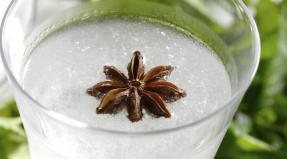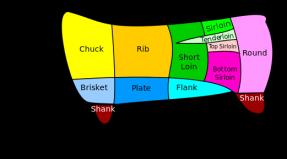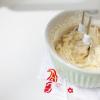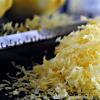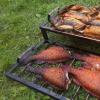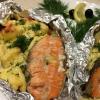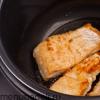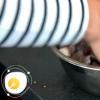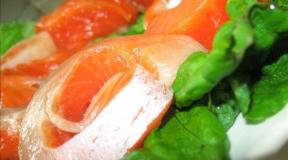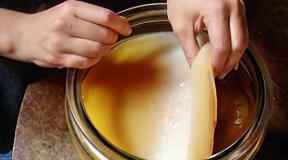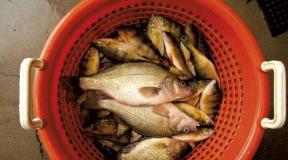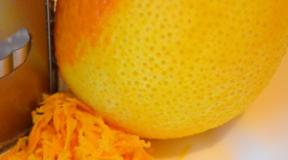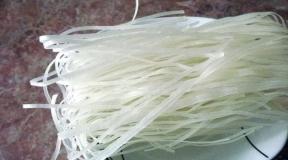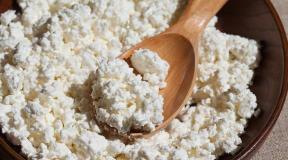Traditions of gifts for Easter. DIY Easter decor
On Tuesday of the second week after Easter Sunday, Orthodox people celebrate a special day of remembrance - parental, called Radonitsa. Since Easter has already passed nine days, many reasonable questions arise: do they paint eggs for Radonitsa and bake Easter cakes for Radonitsa? On the one hand, if a lot of food was prepared for the holiday, then something else may remain, and when the expiration date allows, then why not take them to the cemetery. On the other hand, if there are no blanks left, is it necessary to specially prepare these symbolic products in order to arrange a memorial meal on parental day?
And if necessary, what exactly is customary to cook on this day? And is it necessary to additionally consecrate this food before going to the resting place of relatives? We have collected the most detailed answers to these and other burning topics to help you understand the intricacies of ancient Slavic traditions and religious rules.
According to church traditions, on this day it is necessary to commemorate the dead relatives and friends, and this should be done with Easter eggs and Easter cakes. Moreover, important condition- these symbolic products must be consecrated in the church. Therefore, if you do not have any consecrated painted eggs left from the great holiday, then you will have to paint them in advance before the memorial day and go to church to consecrate them. You can paint eggs directly on Radonitsa, since on this day it is not forbidden to work. Then do this before going to church, after the service, consecrate the products and then go to the cemetery. Actually, the clergy say that, regardless of whether you need to consecrate food or not, a visit to the temple on Radonitsa is a must before going to the churchyard.
We figured out the question of whether eggs are painted on parent's day, now let's find out what colors are best for doing this. It is believed that eggs should be dyed red and brown for Easter, which echoes the biblical story. But on Radonitsa it is preferable to use green and yellow colors. People associate this with the fact that Radonitsa falls on the so-called "green" week, which is why such a color scheme is chosen. Besides, in Slavic tradition shades of green were considered the color of the world of the dead and sadness. That's why it is recommended to paint eggs separately on Radonitsa - to guess with the color.
In order to get the desired shade of eggs, it is not necessary to resort to modern dyes. Everything you need for coloring is literally at hand. To do this, you will need to go to the market or take a walk to the nearest park to get the ingredients.
To get a green gamut, you can choose from:
- birch leaves;
- nettle;
- sorrel;
- spinach.
With the help of the leaves of these plants, shades from light green to yellowish can be obtained. To prepare a coloring broth, pour any amount of foliage with a liter of water and boil them for fifteen minutes. The more greens you put in, the richer the color will be. After the broth boils, leave it to brew for an hour.
In the meantime, you need to prepare the eggs for painting.
- Cool down boiled eggs up to room temperature.
- Dry them thoroughly.
- Degrease the surface by wiping with a cotton swab dipped in vodka.
- Check that the shell is intact, without cracks.
After an hour, dip the eggs into the infused broth, bring to a boil and cook them on low heat for ten minutes. After that, pull out on a napkin and let the eggs cool.
How to lay a funeral table
It is equally important to take to the cemetery Easter cakes, and it will be better if you take freshly baked Easter baking. If the hostess has absolutely no time for a long kneading process yeast dough and baking, then you can get by with store-bought Easter cakes. During this period, they are still in enough sell in bakeries and supermarkets, knowing that many people will need them for Radonitsa. The main thing is that you have time to take the Easter cakes to the church in order to consecrate, since this is a key condition for the parental memorial day.
But not only painted eggs and Easter cakes consisted of traditional memorial meals for Radonitsa among our ancestors. In different regions big country people prepared numerous dishes. Yes, in terms of wealth they were inferior to the Easter feasts, but still no one left the table hungry.
Traditional dishes for Radonitsa
Some of the various dishes people brought to church in order to good lunch was also among the beggars, whom the parish took care of. In our time, this charitable tradition is also met with gratitude. And from the generally accepted dishes, each housewife is free to choose what she cooks to her liking and according to culinary possibilities. But the key dishes that must be present at the meal on Radonitsa will be colored eggs, Easter cakes and kutya.
Many traditions of how our ancestors commemorated the dead on Radonitsa migrated to modern life, but the Orthodox Church has a clearly negative attitude towards them. In particular, we are talking about what people did in the churchyard with colored eggs. Trying to "treat" the deceased relatives with festive food, people put several eggs on the grave, buried them in the ground right on the grave, or broke the shell right on the cross. Often a glass of vodka was placed on the tombstone, and in some regions of the country, vodka was even poured onto the ground at the grave. Large feasts were arranged near the resting place of relatives. All such actions in modern world the clergy consider it unacceptable, since these are signs of a Slavic funeral feast, and not of Orthodox traditions.
Painted eggs and Easter cakes are brought to the cemetery not to leave them on the graves, but to treat them to people begging at the churchyard gates.
Easter cakes are appearing in stores, trade workers have prepared for an increased demand for eggs, the pages of magazines are full of various holiday recipes, and on the streets there were posters with the inscriptions "Christ is Risen!".
Easter! The most important Christian holiday, a celebration of celebrations, a holiday of holidays, established in honor of the resurrection of Jesus Christ. And we obediently paint eggs with onions, buy and light Easter cakes, go to church for a festive service and take part in the procession, or maybe just watch a live broadcast from Jerusalem on TV, feeling satisfaction from the fact that we paid tribute to some obscure traditions, and rarely when we ask ourselves questions: “What does Easter cake have to do with it?”, “Why eggs, and red ones?”, “Why is Easter served at the table?” etc. Meanwhile, the history of Easter and Easter traditions are no less interesting than the celebration itself.
preparations
By the biggest holiday of the year in the house, of course, it must be cleaned, without fail (by popular belief) windows are washed. Or rather, not just for Easter, but for Holy Thursday, not without reason it is also called Maundy Thursday. In the old days, by this day, juniper branches were collected and burned, and smoke was fumigated in all rooms, including a barn and a barn - it was believed that the healing juniper smoke, a kind of incense of Central Russia, protects people and livestock from diseases. It is on this day that it is also supposed to paint eggs, make Easter, knead the dough for Easter cakes - perhaps for housewives this is one of the most troublesome days of the year. Cooking Easter table they try to finish on Thursday, so that nothing distracts from the services of Good Friday, the day of mourning and prayer.
In the old days, they did not forget about personal hygiene - earlier on this day, many swam in the hole. It was on this day that the hair was cut for the first time. one year old baby(it used to be considered a sin to do this), and the girls cut the ends of their braids - so that their hair was thicker and grew better.
However, Holy Thursday has another name - Good Thursday, the day of the Last Supper, and the Orthodox strive on this day, first of all, to cleanse themselves spiritually, to take communion - it was on this day at the Last Supper that Christ established the sacrament of the Eucharist, or communion.
As for the consecration of Easter cakes, curd easter and eggs, then, as a rule, in small rural churches they are consecrated in churches on Sunday immediately after the Easter service, and in big cities, when great amount people, they do it the day before, on Saturday.
Easter service
The service on Easter is especially solemn. As a rule, it starts shortly before midnight, but it is better to come to the church in advance so as not to be out of the door - most churches are packed on Easter night and many parishioners take up seats several hours in advance. The procession begins from the church, so named because the priest carries the cross in front of him. The procession circles the church three times singing. The church compares the participants of the procession with the myrrh-bearing women, who were the first to meet Christ resurrected. At this time, the bells strike - during the Easter week in all Orthodox churches, as a rule, anyone who wishes is allowed to climb the bell tower and ring. And after the end of the service, believers christen - they greet each other with a kiss and the words "Christ is risen!". The candle, with which they walked around the church in procession, used to be usually preserved, attributing to it miraculous properties. This is where the solemn part ends, and the Easter feast begins. During all 40 days of Easter, and especially in the first week, they go to visit, give colored eggs and Easter cakes, and in the old days they also played Easter games.
colored eggs
Everyone paints eggs for Easter - both believers and those for whom this is just a fun custom. And really, what is Easter without eggs? After all, an egg is not only a symbol of life, fertility and the spring rebirth of nature. Long before Christ, the egg was considered a prototype of the universe itself. The very shape of the egg - an oval - among the Greeks symbolized a miracle.
The custom of painting eggs is associated with the name of the Roman emperor Marcus Aurelius. It is believed that on the day he was born, one of his mother's hens laid an egg marked with red dots. This was interpreted as a sign that the future emperor was born. Over time, it became a custom for the Romans to send colored eggs to each other as a congratulation.
There are several reasons why Orthodox paint eggs red for Easter. There is a version that they do this because in Easter holidays the egg is dyed with the blood of Christ.
Another legend says that after the death of Christ, seven Jews gathered for a feast. On the table, among other dishes, were fried chicken and boiled eggs. One of the guests, remembering Christ, said that he would rise on the third day, to which the owner of the house replied that this would be possible only if the chicken on the table came to life and the eggs turned red. And at the same moment the chicken came to life, and the eggs turned red.
However, the most common version is that after the resurrection of Christ, his followers dispersed to different countries, spreading everywhere the news that Christ conquered death. And Mary Magdalene came with this message to the Roman emperor Tiberius himself. As a gift to the emperor, Mary presented an egg as a symbol of the resurrection of Christ. The emperor, however, doubted this and said that just as an egg does not turn from white to red, so the dead do not rise. The egg immediately turned red. Therefore, despite the fact that eggs are dyed in different colors, it is red, the color of life and victory, that is considered the traditional color.
There is also a completely everyday explanation for the custom of dyeing eggs. Its supporters argue that since eggs cannot be eaten during the forty-day Great Lent, and it is impossible to explain this to laying hens, during fasting accumulated huge number eggs that could not be eaten immediately. So that they would not disappear, they were boiled, and in order not to be confused with uncooked, they were painted natural dyes, in particular with onions, which gave them a dark red color. Over time, economic necessity turned into a festive ritual.
Easter
This special sweet curd dish is shaped like a truncated pyramid, symbolizing the Holy Sepulcher, and is usually decorated with the letters "XB". It is also considered a symbol of Easter fun and the sweetness of heavenly life, a prototype of the Kingdom of Heaven, and those very milky rivers in jelly banks that have always been the dream of a Russian peasant.
kulich
Easter cake in its shape resembles artos - bread, which is consecrated at the Easter service. In memory of the fact that Christ, coming to his disciples after the resurrection, himself ate food with them, the apostles did not occupy the middle place at the table while eating, leaving bread in front of him, as if Christ was invisibly present among them. In this way, easter artos is a symbol of Jesus himself. Throughout Bright Week (the holiday week after Easter), it occupies the most prominent place in the temple and is distributed to believers on Saturday of this week. By now, a custom has developed in every family to bake rich bread - kulich, as if homemade artos, and consecrate it in the church.
folk customs
Previously, on Easter night - as soon as the bells rang - fires were lit everywhere in the villages. Bonfires were kindled near the churches, lanterns hung the day before were lit, and tar barrels were set on fire on the hills. The remaining coals from the fires were collected and laid under the roof - in order to protect the house from fire and lightning. In many places, before the start of the Easter service and after it, it was customary to shoot from guns. This tradition was especially widespread among hunters - it was believed that by doing so you would not only ensure a successful hunt for the whole year, but also certainly kill the devil. In addition, "to shoot means to meet Christ."
And in the north of Russia, after the end of the Easter service, they rather ran home to break their fast - it was believed that whoever came running faster would reap the harvest before others.
Folk festivities for Easter today are no longer held on such a scale as before, when they lasted from one day to 2-3 weeks (depending on the area) and were called Krasnaya Gorka - the time of round dances and various games. Just as people kiss each other three times on their cheeks, they also kiss each other with Easter eggs, breaking their different ends in turn. Previously, children everywhere played "pokatushki" - whose egg rolls further. Easter eggs also had various "practical" uses - they were rolled on the ground to make it fertile; the egg was placed in the right hand of the one who died on Easter; often they were not eaten immediately, but cherished throughout the year in order to be used as protection for the house from fire, and crops from hail.
It should be said that, according to tradition, they never go to the cemetery on Easter, moreover, in connection with this joyful day, even the commemoration of the dead ceases during the entire Bright Week. Parents' Day - Radonitsa - is celebrated on the tenth day after Easter, and the custom to visit the graves of relatives on Easter arose in Soviet time- as an attempt to turn a church holiday into a kind of day of remembrance of the dead.
What to give for Easter different countries? There are really a lot of traditions and more knowing how the Light is met Christ's Resurrection representatives different peoples, you can follow their example or prepare your own unique gifts. What is customary to give for Easter? First of all, your love for a loved one. This is exactly what the person who receives your Easter gift should feel. And this means that it is desirable to cook it with your own hands.
Easter Gift Traditions
What do they give for Easter in Russia? Of course, Easter eggs remain the most common gift. Not only in Russia, but also in Serbia, they “christen” with Easter eggs - breaking different ends in turn. The kids arrange "pokatushki" - whose egg rolls further. Why are eggs given at Easter? The answer to this question is simple.
Easter painted egg in Russian culture is a symbol of new life, rebirth. Easter eggs in Russia were rolled on the ground to make it fertile, they put it in the right hand of people who died on Easter, painted eggs were saved for a year to use as protection for the house from fire, crops from hail.
In Bulgaria, hundreds of large and small made before the holiday clay pots, decorated good wishes, are dropped from the upper floors as a sign of the Easter victory over evil. Any passer-by can take a shard from a broken pot. And it is considered a symbol of happiness.
The Easter Bunny, a symbol of fertility and wealth, has been a symbol of Easter in Germany since the 16th century and has since spread throughout the world. In the form of bunnies, toys and sweets are made, as well as souvenirs that sometimes make up entire families or different professions.
Easter basket

Prepare a large cardboard box. Blanks of various shapes and sizes can now be bought at stationery stores or convenience stores. It is better to choose a box with a lid. Buy a few small boxes and 2-2.5 meters of red ribbon of medium thickness. In addition, you will need colored straws.
If you didn’t buy it in a store, you can cut it yourself from colored paper. Cut banana paper will look even more beautiful - you can buy it in art stores. Also buy a set of decoupage napkins, a brush and glue.
Cover the box with decoupage napkins. In a similar way, you can decorate Easter eggs, which you put together with a card in an Easter basket. Fill the finished box a quarter with colored straws and lay the eggs on top.
Cover and tie with red ribbon. Still wondering what to give parents for Easter? Here is the ready answer for you - the Easter basket will be a worthy present on the Bright Resurrection of Christ. By the way, you can put Easter cakes and other holiday pastries in the Easter basket.
Easter card

Do they give gifts at Easter? Of course, but they should be symbolic and in without fail be related to the theme of the holiday. Simple and touching, and at the same time original gift can be a handmade Easter card. You will need white or colored card stock, a set of thin colored ribbons, and a fountain pen or gel pen with a fine refill.
Divide a sheet of cardboard into two parts. Fold one piece in half. Get the base of the postcard. Bend the second part as well and cut it in half. On the basis of the postcard, cut out a “window” in the form of a circle, heart, or other shape. Lay down the cut off part and circle the shape of the window with a pencil. On the cut off part, stick ribbons in the form of bows, flowers, or just crosswise to get a colored weave.
Attach the two parts of the outer page of the card with glue so that the pattern with colored ribbons is on the surface. Inside, write a few lines of warm words for loved one to whom this postcard is intended.
Easter Bunny

What to give children for Easter? Of course, the Easter bunny, which will bring them a traditional Easter present - painted and painted Easter egg. The Easter bunny is very easy to sew from two halves of felt white color. Draw the shape of a hare - make it voluminous, since the body will serve as a bag.
Cut out two identical halves. With a thick thread of a bright color - red, yellow, green or another of your choice, sew with an overlock seam to the level of the ears. Embroider the muzzle of the hare with threads - eyes, nose, mouth. Fill the Easter Bunny with candy.
Be sure to put one colored Easter egg inside. Often, believers have a question about what they give godchildren for Easter. You can give your child such a sweet Easter bunny and, according to tradition, some new wardrobe item. And do not forget to sincerely congratulate relatives and friends on the Bright Resurrection of Christ!
How to make Easter bunnies from pom-poms?
DIY Easter decor
Easter is approaching, so many people are interested in the question of what date is Parents' Day in 2019. Its other name is Radonitsa (consonant with the words "kind" and "joy"). This is the main day of commemoration of all the dead - both Orthodox and people of other views.
In 2019, Parents' Week falls on May 5-11. The name of this week is comparable to the word "joy". Ancestors believed that this was a period of “joyful commemoration”, since this is a joyful time.
Memorial days according to the church calendar
If we talk about exactly when (what date) parental day will take place in 2019, then there will be several answers at once. It is also important for people to know when the big Parents' Saturday will be this year.
Parent Saturday - when
Indeed, several times a year we can hear such words: “Today is parental Saturday.” What does this mean, and why is such a Saturday called parental?
There are 7 parental Saturdays in a year - these are the days when the deceased are commemorated in a special way. They got their name due to the fact that in appeals to the Lord, people first of all mentioned their dead relatives. From year to year, the dates of parent Saturdays change, as they depend on the dates of other church holidays.
If we talk about the date of Radonitsa in 2019, we can recall other memorial dates that are set by the church calendar.
- March 2 - Ecumenical (meatless) parental Saturday. They commemorate all the deceased Orthodox - both parents and relatives, acquaintances, friends.
- March 23, March 30 and April 6 - Parental Saturdays of Great Lent in 2019.
- May 7 - Parent's Day, aka Radonitsa (the first commemoration date allowed by the church after Holy and Bright weeks).
- May 9 - Commemoration Day of the fallen soldiers during the Great Patriotic War.
- June 15 - Trinity parental Saturday, which also has universal significance.
- October 12 - Parental Protection Saturday.
- November 2 - Dmitrievskaya (Dimitrievskaya) parental Saturday.
And there is also Memorial Day on September 11, when memorial services are served in memory of other soldiers who died for the Tsar and the Fatherland.
Other memorial days after Easter
Along with these seven Saturdays, there are also private parenting days. For example, May 9 is not only a public holiday, known as Victory Day, but also the Day of Remembrance of the fallen soldiers during the Great Patriotic War.

Commemoration Day September 11 is the Day of Remembrance for the Fallen Soldiers of the Orthodox Faith. Then memorial services are served in memory of other soldiers who died for the Tsar and the Fatherland. Interestingly, this tradition has existed for more than two centuries - it was first established by Catherine the Great in 1774.

How the dead are commemorated in the church
If we talk about the date of parental day after Easter in 2019, then the main date is Radonitsa Day on May 7th. The deceased are also intensely revered before the Trinity, during the Ecumenical Trinity Parental Saturday (in 2019 it will be June 15).
On all parental Saturdays, services begin the night before. On Friday, the Great Memorial Service takes place (the word itself is translated from Greek as “all-night service”). And the next day, in the morning, a Divine Liturgy for the dead is served, after which a general memorial service takes place.
Believers can come to the temple on any of these days, as long as there is an opportunity and desire. Traditionally, notes are submitted in which the names of the deceased baptized parents or other close people are written in Old Slavonic. It is advisable to submit notes the night before on Friday - they are usually guided by the schedule of the temple itself.

It is also customary to bring a modest fast food and church wine (cahors). It is supposed to leave food in the temple so that anyone in need can take it, as conscience allows.
This tradition has existed for several centuries or even millennia and has purely folk roots. It's called "bring food for the eve."
5 tips for a perfect parenting day
Along with the question of when Easter and Parents' Day will be, people often ask how to spend this special time in the right way. It is clear that you need to go to the cemetery and put things in order there - tidy up the territory, paint the table and the fence, put fresh flowers.
What else, and most importantly, how to do it on Radonitsa:
- According to tradition, it is supposed to take part in the morning service. By the way, it will completely set a person up and help him calm his thoughts before a difficult visit to the deceased ancestors and relatives.
- Then you can light a candle in the cemetery and put it on the table. The contemplation of fire well relaxes and pacifies a person - a fact known to everyone.
- Further, if desired, you can read any prayer, both aloud and to yourself. Of course, you can speak or send thought waves in your own words - the main thing is to do it from a sincere desire.
- You should not imitate the ridiculous traditions associated with drinking alcohol, leaving a glass of vodka and food on the grave. The Church is quite categorical in this matter and says its firm “no”. Yes, and it is intuitively clear that alcohol is not a drink for the cemetery.
- Finally, you can (and should) remember your loved one by giving alms. By the way, it is better to give pastries, eggs and other products (and maybe modest money) to the needy. But vodka and others strong drinks should not be given - again, let's not confuse the holiday with the day of remembrance.
WHY IS THE DAY CALLED PARENTAL
On the one hand, it is clear: we, children, commemorate departed parents. But this is not always the case. Alas, sometimes parents have to commemorate their children.And of course, it is not forbidden to pay the last tribute dear friend, native heart and just a very close, warm person.
It is believed that the day is called parental mainly because the soul after death goes to its kind. Similar statements can be found in the Bible (eg Genesis 26:7-8).
In 2019, Parents' Day will take place on May 7, and it is better to prepare for such an event in advance. But coming to the cemetery on Easter and up to Radonitsa (during the first week after the holiday) is undesirable.
Bright days are for celebration, and parental day is for remembrance. Everything in the year will have its time.
Admit it, do you often allow children to participate in cooking, and even more so festive dishes?
Most parents are aware of how important it is for children to participate in such activities, but still try to do as much as possible in the absence of children. After all, this selfless "help" can even cause a panic attack in the mother, especially if there are several small children in the family.
However, at least sometimes it pays to pull yourself together and let the children cook with you. Easter is approaching - a bright family holiday. By tradition, already from Clean Thursday, the housewives begin to bake Easter cakes. I suggest you bake Easter cake with your kids - believe me, the pride of participation and the anticipation of the holiday will be remembered for a long time!
And in order not to be unfounded, I confess that two children baked Easter cakes with me - a son of almost two years old and a daughter of four years old. And, as it turned out, a four-year-old can already provide real help in the kitchen, along the way listening to my mother's stories about a wonderful holiday and getting the basics of the necessary life knowledge. The baby, of course, had to be closely monitored in order to minimize possible harm applied to the kitchen, although he also "helped" us intensely.
So, for 1.5 kg of flour we needed:
1 pack fresh yeast(100 g)
200 g butter
600 ml milk
400 g sugar
4 eggs
1 tsp salt
fillers - we used walnuts, raisins, candied fruits
To begin with, we diluted the yeast: for this we put it in a large bowl, added a tablespoon of sugar and a glass of warm milk.
Gently stir until almost complete dissolution of the yeast. The child will do an excellent job with this task - you just need to be reminded that you should stir slowly, carefully so as not to spill the milk.
At this time, in order not to wait with folded hands, you can sift the flour that will be needed to make the cake - and this is an activity suitable just for children. Almost all the flour was sifted by the daughter, but the baby also had a hand in this matter and was terribly proud of himself.
If the yeast "cap" is not yet very pronounced, you have time to wash nuts, dried fruits and other fillers. Our division of duties was as follows: the daughter washed the nuts, and I washed the raisins (since it required a very thorough washing). We don’t like purchased candied fruits, we make them ourselves, so we didn’t have to wash them.
Finally, you can check the yeast. We had very fresh ones, and the "hat" turned out to be impressive (and also causing a lot of questions in children about the nature of this phenomenon):
It's time for the grind. Personally, I really love it: I always get a pleasant tingle in my fingertips when mixing the ingredients. We laid out the resulting homogeneous dough in large saucepan, covered with a lid and put in a warm place to fit.
How to find this warm place? We usually put it near the radiator in the warmest room. You can heat the oven quite a bit, turn it off and put the pan with the dough in there. You can take a basin larger than a pan with dough, pour it in hot water from the tap, and put a pan in this water. However, everyone has their own secrets, and there are many of them.
I recommend periodically checking the dough, and if it has come up strong enough, and there is no time for further actions, the dough should be slightly kneaded, because it is no secret that various unexpected circumstances constantly interfere in the life of a mother with children, knocking down and pushing back plans.
Our dough turned out great. Maybe even too much. But the daughter with great delight saw how the lid of the pan rises, and the dough crawls out from there. At the same time, there was another topic for an informative conversation.
Next we are on clean table poured the remaining 200 grams of flour, put the dough out of the pan, kneaded it and began to add fillers. The process of adding fillers was completely on my daughter, only after adding each ingredient I folded the dough several times and kneaded a little.
When all the fillers are added, it's time to knead the dough well. This thing is certainly not for small children's hands, but for strong mother's hands.
After receiving a fragrant lump of dough, a crucial and interesting moment comes up: it's time to lay out future Easter cakes in forms.
Anything can serve as forms: from special paper molds and metal molds for Easter cakes to small pots and coffee cans. From the proposed amount of dough, you can make two large Easter cakes, or you can make many small ones - it all depends solely on your preferences. The main thing is to remember important rule: the dough should be laid out in forms a little more than half, since it will have to go up one more time. It is for this purpose that we leave them for a short time in a warm place. In our case, this warm place was the kitchen itself with the oven already heated. There are different opinions, but I usually grease the bottom and sides of the mold butter so that there are no problems with the finished product.
When the Easter cakes approached enough, we smeared them with yolk (a child will do a great job with this, in any case, my daughter considers this fascinating process to be her permanent duty) and put them in the oven, preheated to about 190 degrees. So that the bottom of the Easter cakes does not burn and does not become stale, you must always place a container of water under a baking sheet or grate with Easter cakes.
Now it remains to wait and clean up the kitchen. Important: do not forget to warn the children that yeast dough does not like it very much when people quarrel and fight when preparing it. Perhaps this will give you many pleasant quiet minutes.
The wait can last an hour or longer - it all depends on the size of the Easter cakes and the features of the oven. For best result after about an hour, you need to start periodically checking the Easter cakes with a wooden toothpick or skewer - from finished Easter cake it will come out dry and clean. Only the oven door should be opened and closed smoothly and without knocking.
Finally, the cookies are ready! It's time to decorate them. There are quite a few decoration kits on sale now, various toppings as well as frosting fast food in packages. This time we made the glaze ourselves from whipped with powdered sugar proteins, and sprinkled with a beautiful sprinkle from a special set. This stage allows you to unfold your fantasy at 100%! And, of course, children with great pleasure participate in decorating Easter cakes. True, they also try to eat a large part of the sprinkles.
Delicious and fragrant Easter cakes ready. It remains to put them in Easter baskets, take them to the Temple for consecration, and then treat and give them to all loved ones.
Happy Easter!
By the way, this year we got 9 different-sized Easter cakes and Easter cakes, and you?
Ekaterina Tarazevich
